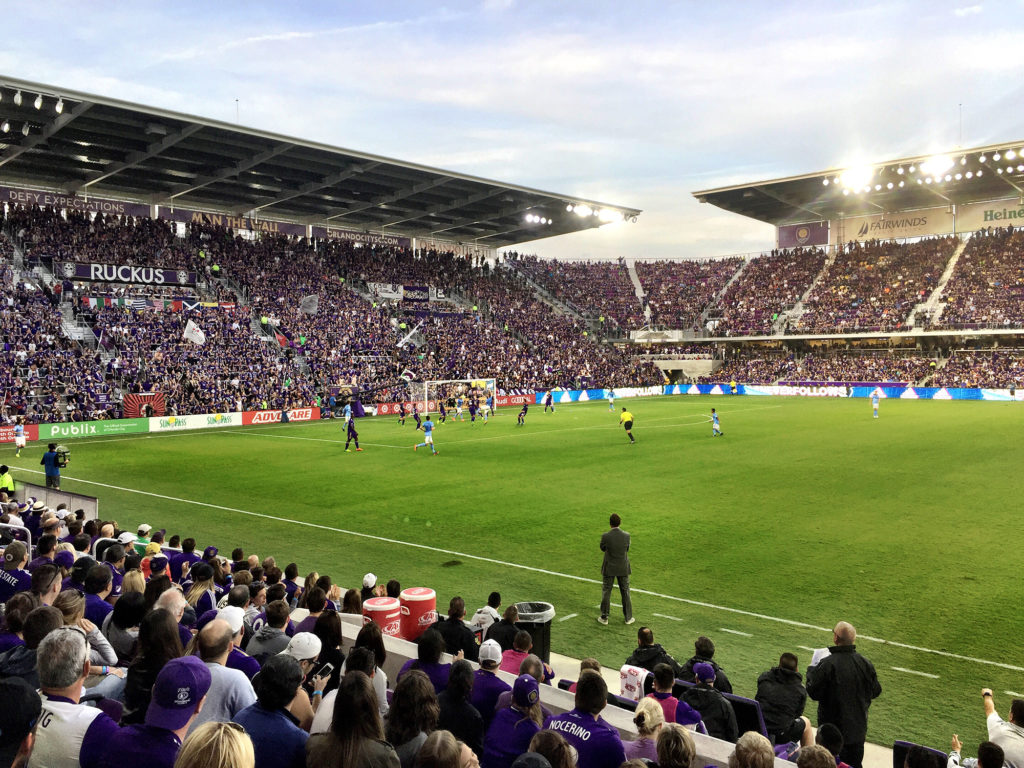
A key component of new MLS stadium planning involves economic development as part of a larger project. When that economic growth does happen, we’re seeing the need for careful planning and a commitment to equity.
Many recent new MLS stadium projects have taken place in disadvantaged urban areas, including Orlando City Stadium in Orlando’s Parramore neighborhood and Allianz Field in St. Paul’s Midway. Upcoming projects billed as urban-renewal projects include a new FC Cincinnati stadium, while economic development is also baked into Sacramento and St. Louis expansion bids.
Economic development has been part of sales pitches for public funding of sports facilities for years now, with some proposals working (like Denver’s Coors Field and San Diego’s Petco Park) and others not (like Chester’s Talen Energy Stadium). Today’s breed of new MLS stadium relies on heavy private investment combined with public spending on infrastructure. Allianz Field, for instance, cost $250 million to build, with that amount privately financed; another $20 million for infrastructure was put up by public entities. St. Paul’s Midway has been in an economic decline for several decades now, but city officials and team owners see the stadium as fuel for further investment in the area—some happening now, some in the future.
In Orlando, that future is now, as the Parramore neighborhood struggles with the problems posed by gentrification. Orlando City Stadium isn’t the only project contributing to gentrification—the general growth in Orlando’s central core, other key developments in the area, as well as cheap land values also are key factors—there’s no doubt Parramore is attracting plenty of investor interest. From the Orlando Sentinel:
“Everything in the neighborhood is changing,” says [Shanta] Barton-Stubbs, the charity’s unpaid director [at the after-school New Image Youth Center]. “We’re just afraid we’ll be priced out, and we don’t know how much longer we can last. We have investors knocking on the door every day asking who owns the building, saying they want to buy.”
She isn’t alone in her fears. Even as excitement builds over reinventing the historically impoverished community and fulfilling Orlando’s vision for its projected $1 billion Creative Village in Parramore, longtime residents here are struggling with skyrocketing rents and worrying that new growth will elbow them out.
Parramore — a neighborhood born from segregation — has spent decades in decline, grappling with crime, poverty, institutional racism and deteriorating housing stock. It has been walled off by Interstate 4 and the East-West Expressway, invaded by a lopsided share of homeless shelters and soup kitchens, and abandoned by business owners and residents who could afford pricier locales.
But after repeated attempts at revitalization dating back at least 25 years, the most recent wave of bulldozing and building seems to many like a tipping point. And for some it’s a cause for celebration.
The key is attracting investment while not displacing long-time residents in need of affordable housing. The Parramore Asset Stabilization Fund, launched by a local charity and community loan programs, is buying houses and renovating them while keeping rents affordable. The city is investing in improvements for local business owners, as is the Orlando City Foundation, a charity launched by MLS’s Orlando City.
These same dynamics of gentrification and equity are already at play in Cincinnati, where a group of tenants who have to leave buildings owned by FC Cincinnati are seeking new housing and compensation from the club. Setting up charities to address the issues of gentrification and equity is a key part of the new MLS stadium strategy, one we expect to continue as expansion moves forward.
